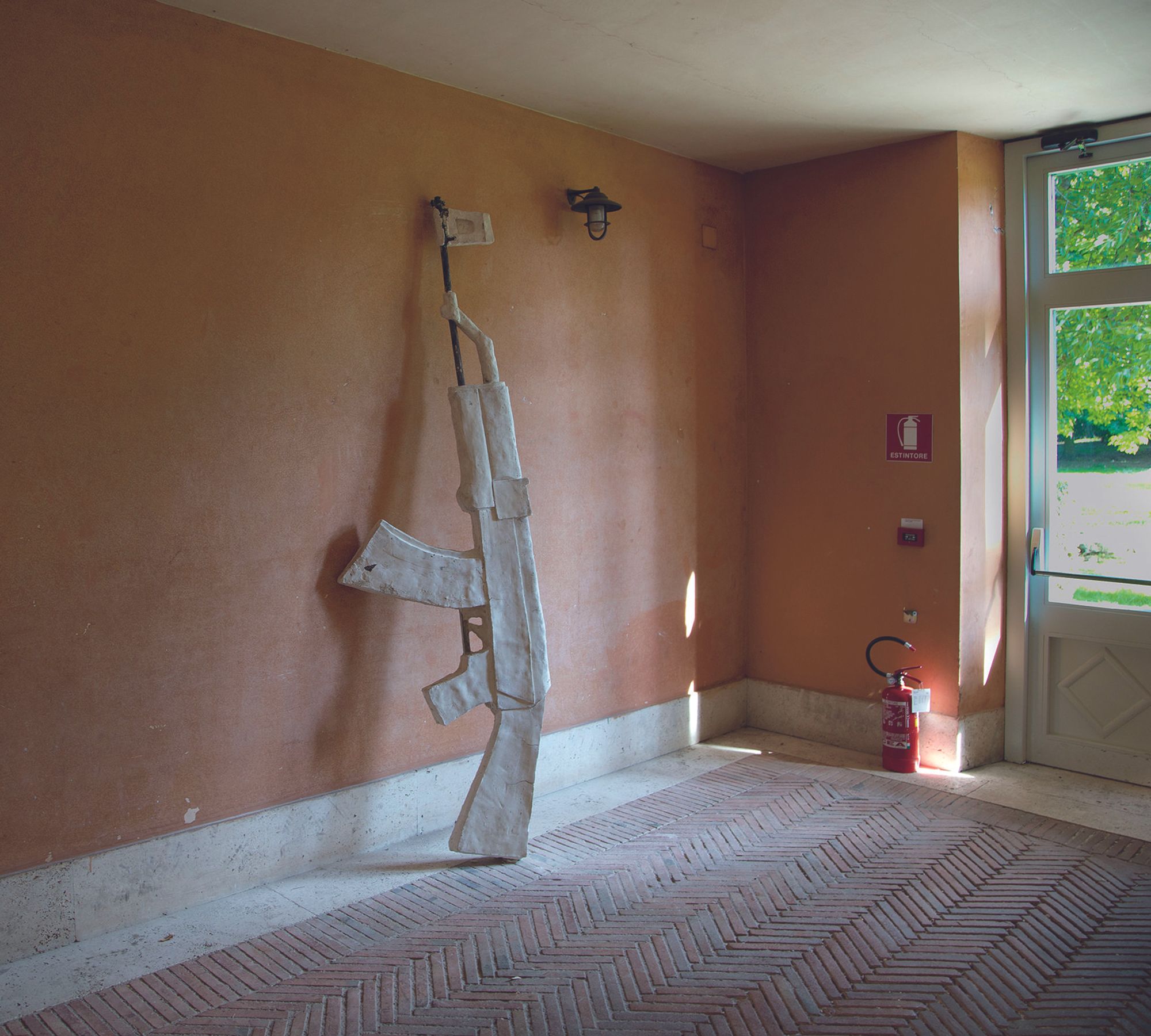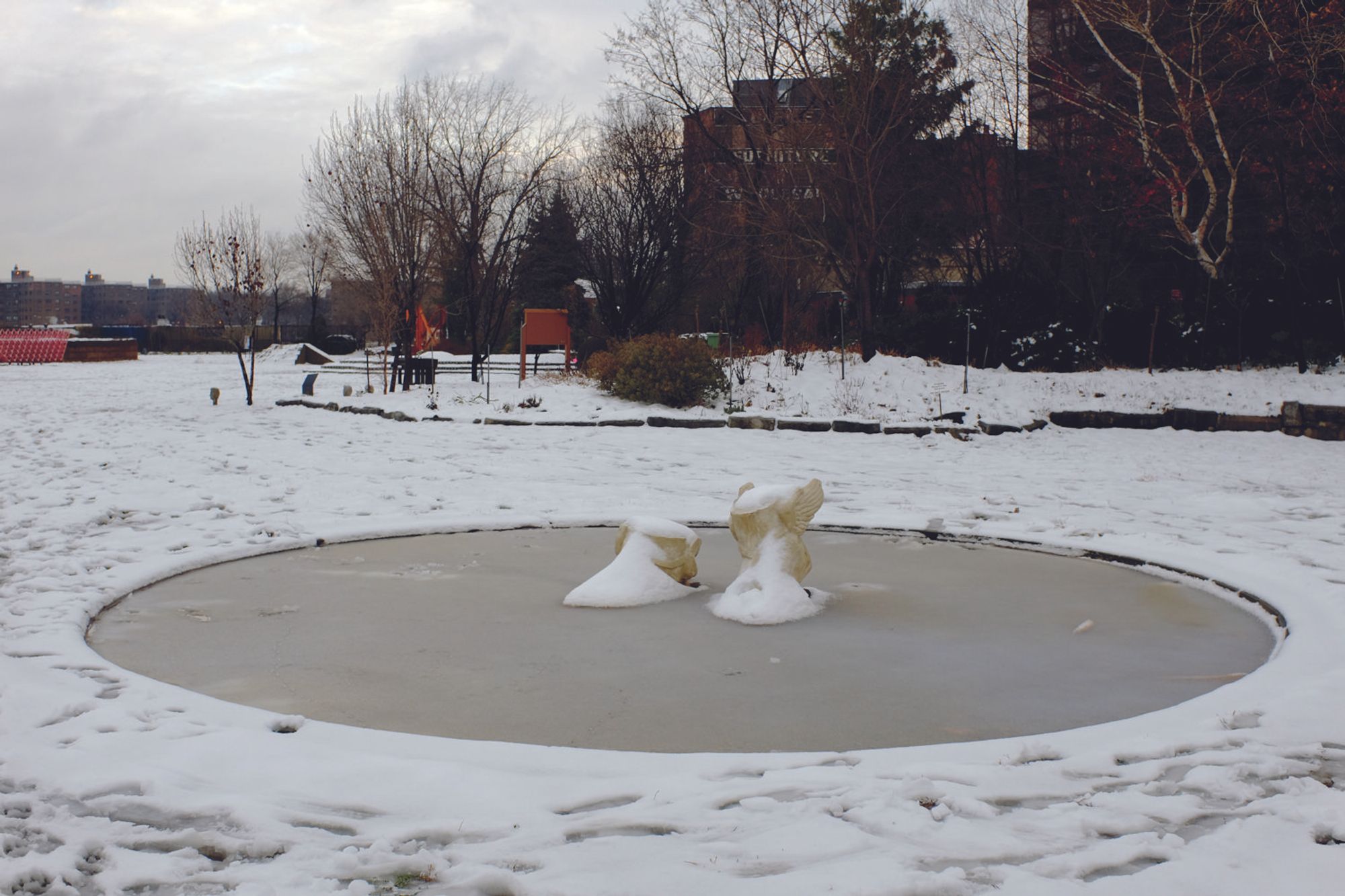Onyedika Chuke: The Forever Museum Archive_Circa 6000BCE
Editor's Note: Since 2011, artist and former Pioneer Works resident Onyedika Chuke has been focused on The Forever Museum Archive, an ongoing project that brings together a disquieting collection of sculptures, text, and images. Together, they serve as reference points through which to trace the systems of power that shape contemporary society.
For its latest iteration, The Forever Museum Archive_Circa 6000BCE (2021), co-presented by Pioneer Works and Lower Manhattan Cultural Council, Chuke turned his focus to the criminal justice system in the United States—circling the present penal code back to antiquity, through the Renaissance, and onto the colonial birth of American incarceration.
To mark the occasion and shed further light on his work, Broadcast is releasing a new video on the project, accompanied by an essay by curator Emma Enderby, which originally appeared in print in the Pioneer Works Journal, in 2017.
The Forever
These words by French poet Paul Valéry—engraved in the facade of Palais de Chaillot, Paris’s complex of museums—open a passage through which to consider the work of Onyedika Chuke. At once an artist and archivist, Chuke researches, creates, and collects various media from sculpture to drawing to text for The Forever Museum Archive, which he conceptualized on a research trip in Libya in 2011. The archive is a response to an essay he wrote titled “Forever Museum” (2011), which muses on the museum collection as myriad nonlinear “forever” objects, time capsules, and points of departure where endless references and connections can be made. While Chuke’s own archive echoes traditional systems of museum display, it further compresses, rearranges, and grows, with each new work by the artist forming the next contribution. The archive does not present history as linear or circular, but as a collage that Chuke shifts and combines to suggest new perspectives—be it radically juxtaposing geopolitics with Freud, memorials with refugees, antiquity with the AK-47. Everything is connected.
The elements in Chuke’s archive of found objects, sculptures, drawings, performances, and architecture do not represent singular moments or narratives. They are likewise not limited to their aesthetic references or subjects, but extend to humanity’s underlying mechanisms. From a built sanctuary to the year 1919 to forgotten memorials, Chuke connects references to combine the historical with the contemporary that shakes our sense of stability. Like all collections, the final purpose of or audience for The Forever Museum Archive remains unknown. As Jacques Derrida aptly stated, “The archive: if we want to know what that will have meant, we will only know in times to come.”
A Description of Three Entries in The Forever Museum Archive:

THE FOREVER MUSEUM ARCHIVE: DOME AND DOUBLE NYMPH_AN ARCHITECTURAL TEMPLATE FOR SPIRITUAL WORSHIP is installed in the Swiss Alps, nine thousand feet above sea level. Commissioned as a permanent installation in 2012, the work is an architectural intervention with three components inside an existing concrete structure. The installation can be used as sanctuary, but its origin and purpose are not defined, for Chuke’s interventions conflate various ideologies to form a meditative space that is both pagan and monotheistic, ruin and relic. In Dome, the colored roof of the sanctuary, is made of steel and Plexiglas panels, and while it lacks elemental functionality, it instead provides a kind of template filled with references to archetypical architecture, particularly in the panels: the colors allude to modernist art; the shapes are reminiscent of Buddhist prayer flags; and their sizes align with the Vitruvian ideal of proportion common to Renaissance buildings. Each panel measures the length of Chuke’s torso, while the wire frame measures the span of his arms. Within the existing structure rests the sculpture Double Nymph, a forty-seven-foot tall Siamese Alpine tree with two connected trunks. The work’s title, the carvings in the trunks, and four oval crevices that serve as joints refer to maternity, while its spear-like form brings to mind the phallic shape of a javelin thrown from the heavens. Viewing Room, the third intervention, is a vitrine recessed into the floor. Its glass protects and displays a collection of mosaic tiles, Carrera marble, carved cow horns, and dried skins from the Alpine tree. While each item has its own history, use, and signifiers, in the case they become “forever” objects—the proximity of their display intertwines their meaning and purpose.

THE FOREVER MUSEUM ARCHIVE: THE UNTITLED 1919_AK47 forms a set of cast objects—a torso, a bed, and two AK-47s—in The Forever Museum Archive. Installed in 2015 throughout the American Academy in Rome, the steel and concrete sculptures interweave form and reference to consider the roots of contemporary collective anxiety. Chuke’s starting point, the year 1919, pulls together three disparate events: the publications of Benito Mussolini’s Fascist Manifesto and Sigmund Freud’s The Uncanny, and the birth of Russian general and AK-47 inventor Mikhail Kalashnikov. While seemingly unrelated, these historic events took place in a year that helped define a new order, with all three aspects intertwined through their collective impact on a social, cultural, political, and personal consciousness. Two objects in The Untitled: 1919 are eight-foot-tall concrete AK-47s, their oversized nature connoting the gargantuan public sculptures created during the dawn of Italian Fascism. Another work, hooked onto a steel sheet, is of a hanging concrete torso, a cast of a fourth-century BCE Roman sculpture from the Academy’s archeology collection. Like meat in a butcher shop, the suspension of the amputated, scarred body is reminiscent of Francis Bacon’s grotesque, raw imagery, or the flayed skins and tortured carcasses of Leon Golub’s early work. The sculpture reminds us that the remains of antiquity are broken bodies and limbless torsos, distant memories of the perfect human forms they once emulated. Lost to time, war, and nature, their demise is a metaphor for the pain and loss encountered by humankind. By using concrete, a populist, ubiquitous, and utilitarian material of the twentieth century, Chuke’s sculptures stand in stark contrast to the history of Roman and later Italian marble forms. A section of a bed, also sculpted in concrete, captures a similar sense of anxiety. Cast from a mold of a military-sized mattress and pillow salvaged from the Janiculum, a hill in western Rome. The mattress is half missing, with steel rods violently protruding from its remains. Even for a soldier, the bed is a place of dreams. But like the broken torso, its material loss calls to mind the realities of destruction and the unease of bringing the familiar and unfamiliar together.

Commissioned by New York City’s Socrates Sculpture Park, THE FOREVER MUSEUM ARCHIVE: THE UNTITLED_A TEMPLATE FOR MEMORIAL ARCHITECTURE_CIRCA_2000S_HERMES is Chuke’s most recent addition to the Archive. The installation is a template for a memorial landscape and part of a series of works that reflect on the early years of the new millennium using the aesthetics and symbolism of monuments. Embedded in the earth nearby rests a marble plaque with no text, its surface reflecting the sky above. Situated in a shallow reflective pool are the feet of Hermes, the wings broken and snapped. Was the body ever present, ever made? The colossal size of the feet within this pool of water carries the grandeur of memorials, but the god himself is an allegory for movement, transitions, and boundaries. This metaphor is also present in a pair of seashell sandals, installed with a pine sapling—trees commonly used in commemorating, remembering, and celebrating events from life to death. The sandals are indoor shoes turned outdoor; the shells, a home for feet, are empty, as if the body had been removed. They are symbols of displacement, a memorial that brings to mind the ongoing European refugee crisis, and the people forced to relocate due to the gentrification or “urban renewal” of neighborhoods in many US cities. Landmarks, monuments, and memorials are public sites of collective remembrance, placeholders for loss, and markers of our shared heritage, but for Chuke, their symbolic language offers another tool to explore history, dissonance, and politics, questioning what is and what should be remembered. ♦
Subscribe to Broadcast